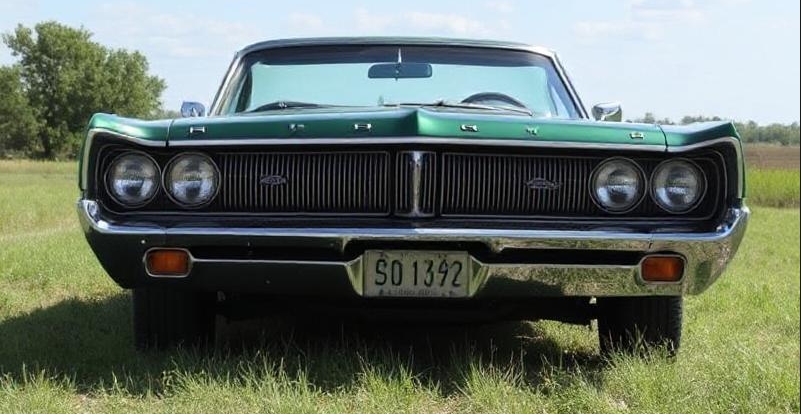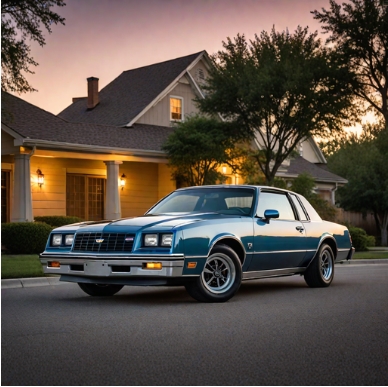The Evolution of the Mercury Cyclone: A Comprehensive Review
The Mercury Cyclone is one of the most iconic American muscle cars in the history of the automotive industry. Launched by Mercury, a division of the Ford Motor Company, in 1964, this high-performance vehicle was designed to compete with the likes of the Ford Mustang and Pontiac GTO. Over the years, the Mercury Cyclone underwent several transformations, resulting in various models, trim levels, and engine options that captivated car enthusiasts and collectors alike. In this article, we will delve into the evolution of the Mercury Cyclone, covering its production years, models, and trim levels offered throughout its remarkable history.
**1964-1965: The First Generation (Cyclone and Cyclone Sport)
The original Mercury Cyclone made its debut in 1964 as the top performance model for Mercury. Sharing its platform with the Ford Fairlane, the Cyclone featured a sleek, two-door hardtop body style and a powerful 289-cubic-inch (4.7-liter) V8 engine. The ’64 Cyclone offered only a single trim level, with a three-speed manual transmission as standard and a three-speed automatic as an option. For the 1965 model year, a sporty Cyclone Sport model joined the lineup, featuring a fastback body style, a 289 V8, and a four-speed manual transmission as standard.
1966-1967: Mid-Model Updates (Cyclone and Cyclone GT)
The 1966 Mercury Cyclone saw the introduction of a new front grille, hood scoop, and rear spoiler, giving it a more aggressive appearance. Engine options included a 289 V8 and a potent 428-cubic-inch (7.0-liter) V8 in the high-performance Cyclone GT trim level. The Cyclone GT also featured a sport-tuned suspension, heavy-duty brakes, and a four-speed manual transmission. The Cyclone Sport returned for the 1966 model year, but its fastback body style was dropped, replaced by a four-seat convertible.
1968-1969: The Introduction of the Cyclone GT 428 (Cyclone, Cyclone Sport, and Cyclone GT)
The 1968 Mercury Cyclone featured a new front grille, rear taillights, and hood stripes, giving it a bold new look. For the first time, the Cyclone offered a wide range of engine options, including a 289 V8, a 351-cubic-inch (5.8-liter) V8, and the powerful 428 Cobra Jet V8 in the Cyclone GT 428. This high-performance engine produced 335 horsepower and 420 lb-ft of torque. A new Cyclone Sport model joined the lineup, featuring a sport-tuned suspension and heavy-duty brakes.
1970-1971: The Introduction of the Cyclone Spoiler (Cyclone, Cyclone Sport, Cyclone GT, and Cyclone Spoiler)
The 1970 Mercury Cyclone saw significant changes, including a new front grille, rear spoiler, and side stripes. Engine options included a 428 Cobra Jet V8 with a four-barrel carburetor, producing 335 horsepower. A new Cyclone Spoiler model emerged, featuring a more aggressive rear spoiler and a unique stripe package. The Cyclone Sport continued into 1971, while the Cyclone GT 428 was dropped due to emissions regulations.
1972-1974: The Introduction of the Comet and the End of the Cyclone (Cyclone and Comet)
The 1972 Mercury Cyclone saw a major redesign, with a new front grille, rear taillights, and hood stripes. However, due to increasing emissions regulations and declining sales, the Cyclone nameplate was replaced by the Comet in 1972. The Cyclone Sport and Cyclone GT were discontinued, and the Cyclone Spoiler was dropped. For the 1973 model year, the Comet featured a new 351 V8 engine, while the 1974 model year saw the introduction of a 255 cubic-inch (4.2-liter) V8 engine.
The Mercury Cyclone’s remarkable history spanned over two decades, from 1964 to 1974. Throughout its evolution, the Mercury Cyclone underwent significant transformations, resulting in various models, trim levels, and engine options that captivated car enthusiasts and collectors alike. Although its production ended with the 1974 Comet, the Mercury Cyclone remains an iconic symbol of American muscle cars and a testament to the innovative designs and engineering skills of the Mercury division.
.

.
Key Models and Trim Levels:
- 1964-1965: Cyclone and Cyclone Sport
- 1966-1967: Cyclone and Cyclone Sport
- 1968-1969: Cyclone, Cyclone Sport, and Cyclone GT 428
- 1970-1971: Cyclone, Cyclone Sport, Cyclone GT, and Cyclone Spoiler
- 1972-1974: Comet (formerly Cyclone)
Engine Options:
- 1964-1965: 289 V8 (210 horsepower)
- 1966-1967: 289 V8 (225 horsepower), 428 Cobra Jet V8 (335 horsepower)
- 1968-1969: 289 V8 (210 horsepower), 351 V8 (250 horsepower), and 428 Cobra Jet V8 (335 horsepower)
- 1970-1971: 428 Cobra Jet V8 (335 horsepower)
- 1972-1974: 255 V8 (155 horsepower) and 351 V8 (210 horsepower)
Transmission Options:
- 1964-1969: Three-speed manual transmission, three-speed automatic transmission
- 1970-1974: Three-speed manual transmission, four-speed manual transmission, and three-speed automatic transmission
Key Milestones:
- 1964: The Mercury Cyclone makes its debut
- 1965: The Cyclone Sport model is introduced
- 1966: The Cyclone GT trim level debuts with a 428 V8 engine
- 1968: The Cyclone GT 428 is introduced with a 428 Cobra Jet V8 engine
- 1970: The Cyclone Spoiler is introduced
- 1972: The Cyclone nameplate is replaced by the Comet
- 1974: Production of the Mercury Comet (formerly Cyclone) ends
The Mercury Cyclone is an iconic American muscle car that continues to captivate car enthusiasts and collectors alike. Its rich history spans over two decades, with various models, trim levels, and engine options that showcase its innovative designs and engineering skills. From its humble beginnings as a 289 V8-powered hardtop in 1964 to its final iteration as the 1974 Comet, the Mercury Cyclone remains an enduring symbol of American muscle cars and a testament to the innovative spirit of the Mercury division.







